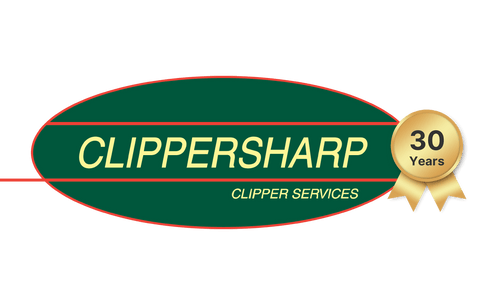Dog Grooming at Home
Many of us have had to turn our hands to new things whilst adapting to life on lock down, and dog grooming might be one of them for you.
Making the right choice
When it comes to grooming, some dogs may prove nervous or hesitant when first introduced to clippers. If you and your dog are new to the clipping world we suggest looking at the quietest clippers you can, and recommend cordless as the easiest option. This then eliminates a trailing lead that can get in the way.
If your dog is a seasoned visitor to the grooming salon, and you know the type of clipper that has been used and the grade of blades that are most suitable for the coat that you need to clip, then that will certainly make your choice and job easier and hopefully your dog will know no difference!
There is a difference between trimmers and clippers. Trimmers tend to be light duty and capable mainly for trimming between paws, around ears and all the fiddly bits. Clippers are more powerful to cope with larger areas and all coat conditions and can take a variety of blades and add on combs to cater for all types.
If you look at a selection of clippers, you will see a wide range in both price and style. The professional range of clippers tend to take the snap on blade system, giving a choice of many different grades of blades. This system is favoured by dog groomers and vets and is also popular with the homeowner as a reliable system to use, particularly if the coat is a thick or a tricky one to clip. The brands that are most familiar in the dog grooming scene are the brands Oster, Andis, Wahl and Aesculap. Within the equestrian sector, brands such as Liveryman and Lister offer light duty horse clippers with the snap on blade system which also can double up for dog grooming, and offer a dual purpose solution.
Add on plastic combs are also an option. These can be used to give a more natural or layered finish and again good to use with thick coats to get into the bottom hair. These are generally best used with a No 10 blade and again there are a great variety of lengths to choose from.
Clipping dogs is quite different to clipping horses, so if you are used to clipping horses, check out dog grooming sessions on You Tube just to familiarise yourself on techniques. Instead of going against the hair you need to be clipping with the lay of the hair when clipping your dog.
Preparation
Once you have found the clipper and blades that are suitable, it will make the clipping job much easier and give a better finish if the dog is bathed and dried off thoroughly, and then brushed all over to ensure dirt and tangles are removed.
Clipping Tips to help
- If the dog is noise sensitive or at all worried, run the clipper near him whilst you are grooming and making a fuss of him before starting the job
- Have someone hold the dog if he appears anxious and reassure
- Clip in the direction of the coat – this avoids unsightly lines and will give a smooth finish
- Be gentle, let the clipper do the work and don’t push down too hard
- Start at the neck and work you way down to the tail which will make it easier clipping with the hair
- Clip one side completely before starting the other side
- Clip slowly, keeping the same rhythm. This will help the dog to remain confident in what you are doing and calm throughout.
- Check the temperature of the blades and oil before you start and then again on a regular basis to keep blade running as cool as possible
- Find a time when you are not under pressure or in a hurry so that you can make it an enjoyable time spent with your dog
Create a good experience for your dog. Reactions will occur if you rush, use blunt or hot blades, or are rough. Quite often home groomed dogs may not have quite the professional finish, but may have a much happier experience than being groomed in a busy salon.
Have fun and enjoy the new challenge!
